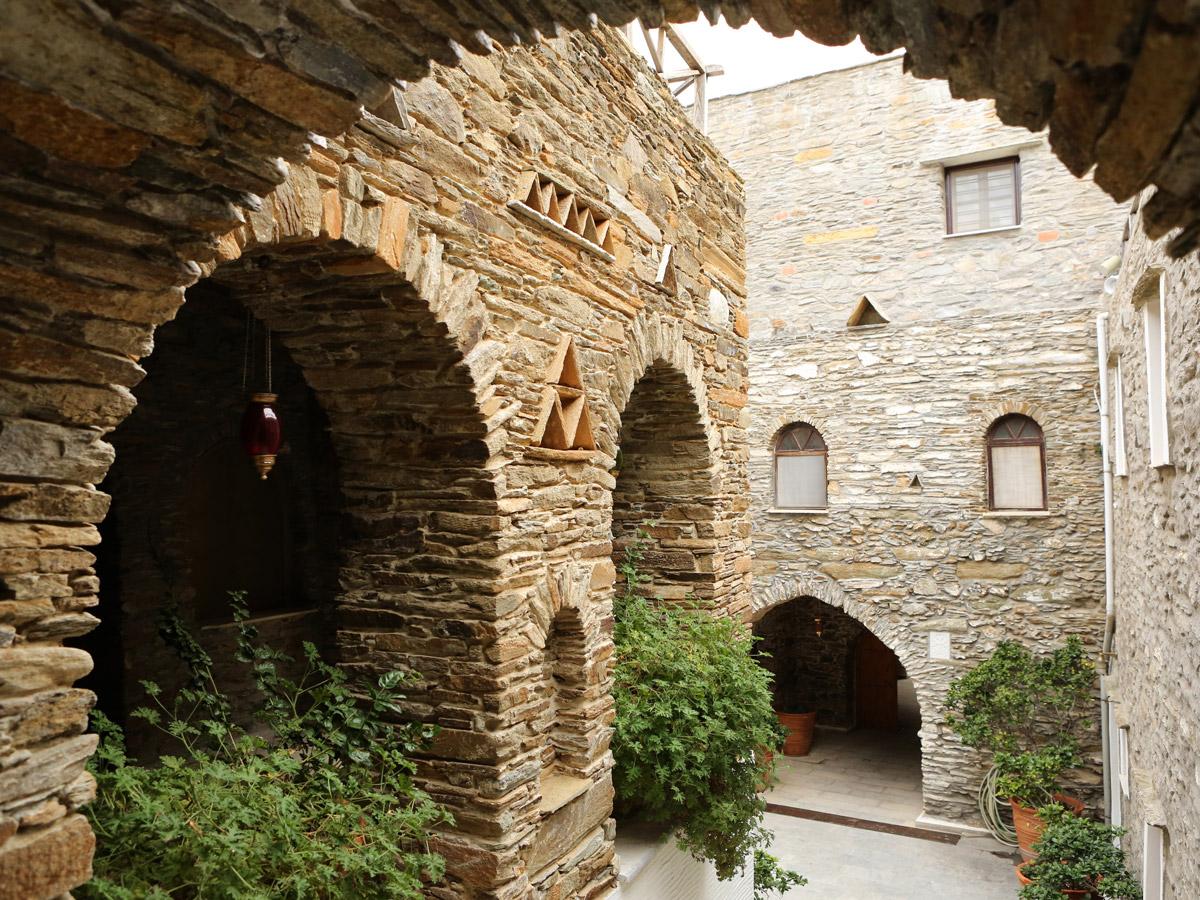Saint Nicholas Monastery

The Holy Monastery of Saint Nikolaos in Andros
The Monastery of Saint Nikolaos is located north of Chora, 5 km from the village of Apoikia, at the area "Ores". The area was named "Hours" because the rulers and sailors of the island went up to the monastery to listen to the service of the Great Vespers and Royal Hours. According to tales, the monastery was built in the 11th century and in 1760 extensive repairs were made. The monastery of Saint Nikolaos was a branch of the Filiki Eteria of the Cyclades, while it functioned as a printing house, a bookbinding and a secret school during the Othoman Empire occupation, due to its remote location. It is an impressive complex of exceptional architecture, which is excellently maintained.
The Monastery is surrounded by high walls and the katholikon is cruciform type, two-columned, with a narthex and a dome.
Inside the monastery there are 20 chapels and throughout the island there are 40 in total. In the monastery is kept the holy Skull of St. Nicholas of Vounenos, the jaw of St. Cosmas the Aetolian, part of the Skull of St. Joseph of Arimathea and many other holy relics. The Holy Iconostasis of the Monastery of St. Nicholas I unique and holy water gushes which sanctifies the faithful until today.
The Monastery celebrates on The 6th of December (of St. Nicholas), on the 9th of May (of St. Nicholas and The Younger), on and on the 2nd and 20th of July.
The Monastery of St. Nicholas is very important heirloom
The Monastery of Saint Nikolaos houses many priceless religious and holy relics. In the monastery is kept since the 16th century, the holy icon of Saint Myrovlytissa after its transfer from the church of Saint Vlaherna of Constantinople as well as the silver-embroidered icon of St. Nicholas. The icon was painted by nun Leontia who used gemstones as materials and instead of yarn her own hair.
In the monastery are also kept the holy relics of St. Nicholas the Hierarch, protector and curator of the Holy Monastery. The heirloom also guards the Holy Skull of St. Nicholas the New, the jaw of St. Cosmas the Aetolian, the hand of St. Makrini sister of Basil the Great, part of the skull of St. Joseph of Arimathea, the funeral of Christ, the thigh of St. James the Great Martyr of Persos and many other holy relics.

